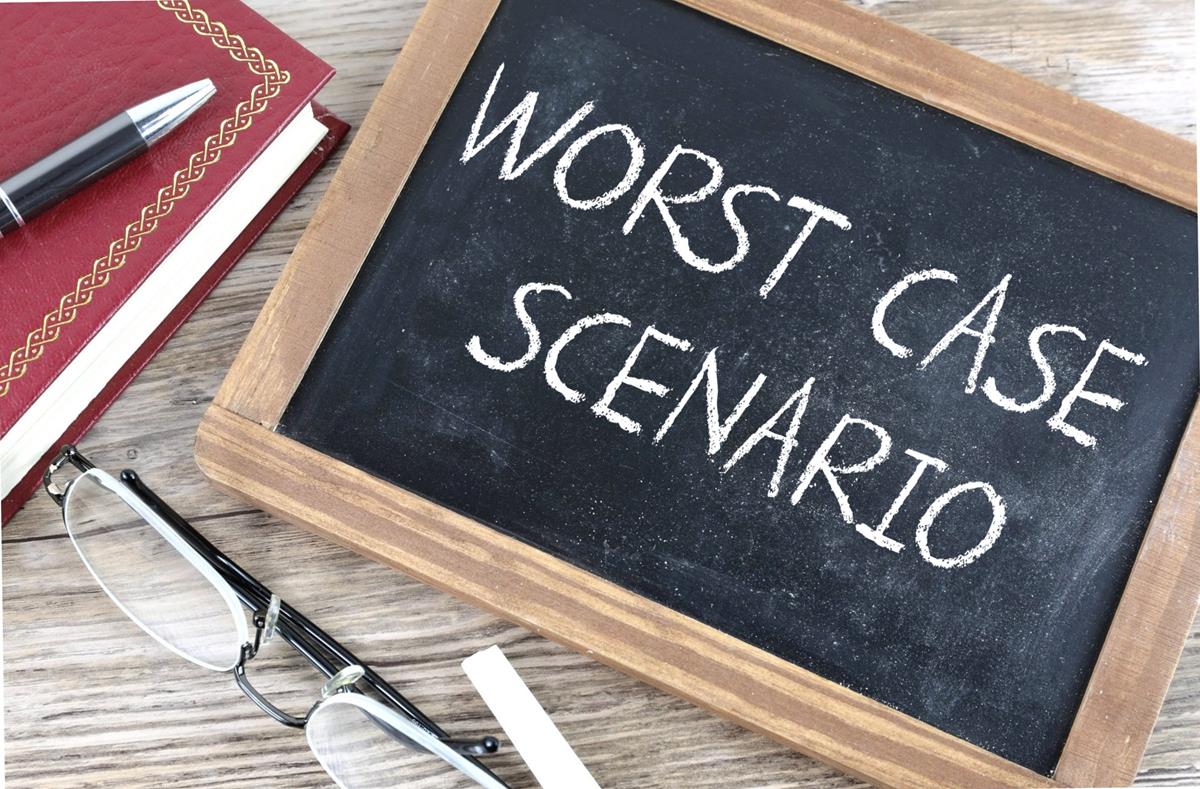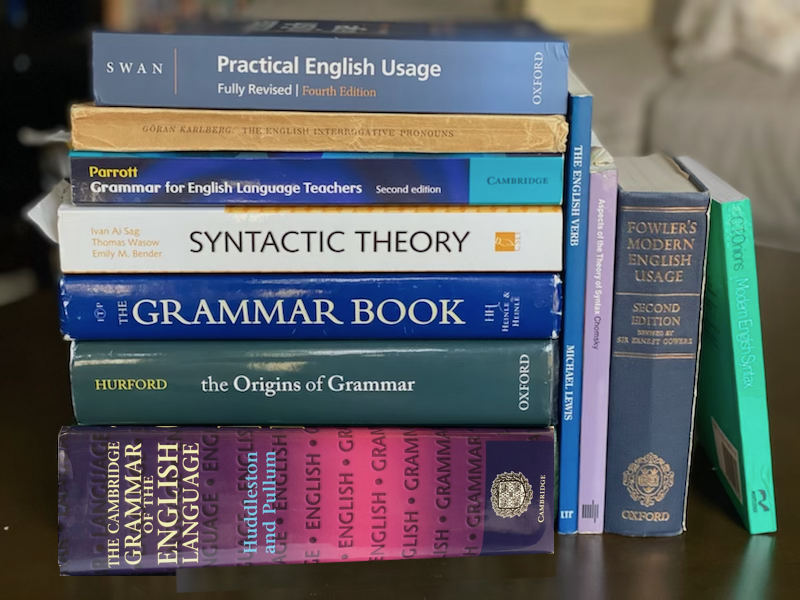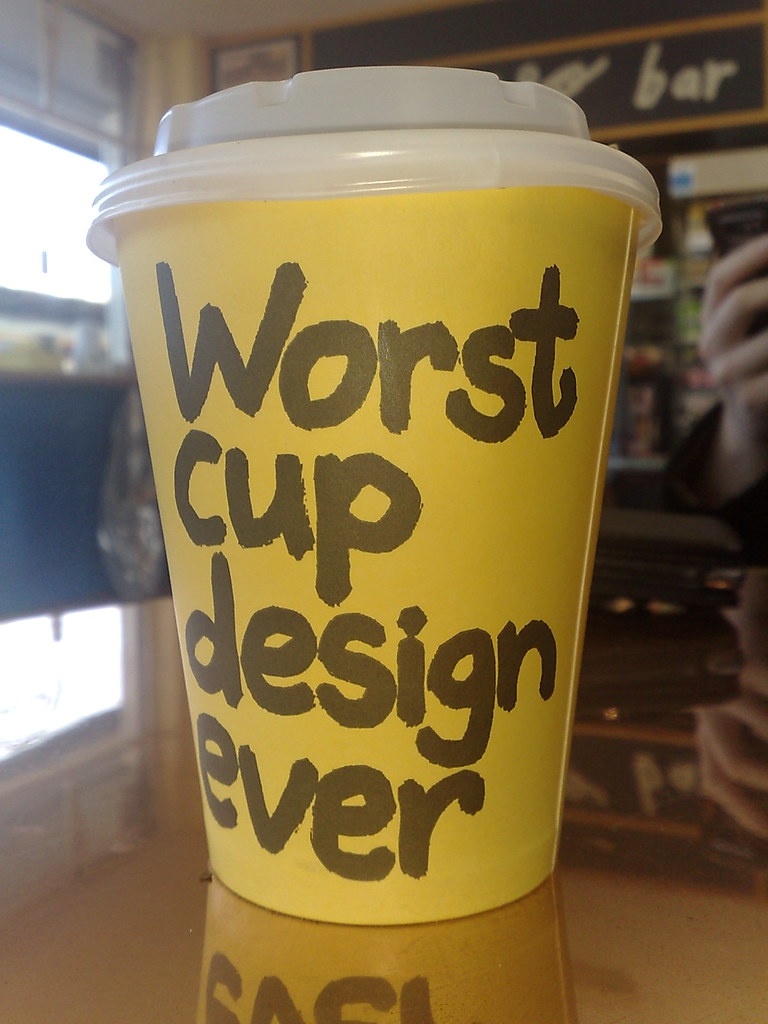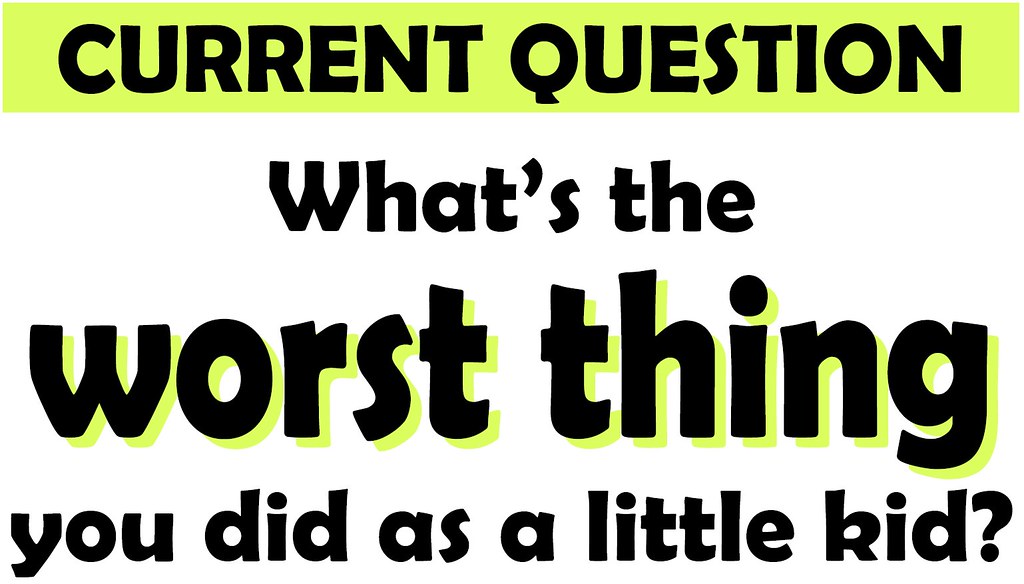In the vast landscape of the English language, few pairs of words cause as much confusion and consternation as ‘worse’ and ‘worst.’ They might sound similar, share a common root, and both carry the weight of negativity, but their distinct roles in communication are absolutely crucial. For anyone striving for clarity and precision in their writing and speech, understanding these nuances isn’t just about avoiding a red mark on a paper; it’s about conveying your message with impact and accuracy. We’ve all seen, or perhaps even made, the mistakes that turn a simple sentence into a grammatical head-scratcher.
It’s a linguistic battleground, really. From casual conversations to professional reports, the incorrect use of ‘worse’ or ‘worst’ can subtly undermine credibility or, at the very least, make a reader pause. Think of all the online discussions, quizzes, and even friendly debates sparked by these two seemingly innocuous words. Our community has spoken, highlighting these common grammatical trip-ups as some of the most frustrating. So, if you’ve ever found yourself second-guessing which one to use, you’re definitely not alone.
To put an end to the confusion, we’re diving deep into the world of ‘worse’ and ‘worst,’ breaking down everything you need to know. We’ll explore their definitions, trace their origins as forms of ‘bad,’ and tackle the most common expressions that lead people astray. Consider this your definitive guide to mastering these tricky terms, ensuring that your communication is always clear, correct, and truly impactful. Let’s make sure these grammar mix-ups are poured down the sink for good!

1. **The Fundamental Distinction: Comparative vs. Superlative Forms**
At the heart of the ‘worse’ versus ‘worst’ dilemma lies a foundational concept in grammar: comparative and superlative adjectives. These are the tools we use to compare things, indicating differing degrees of a quality. ‘Worse’ and ‘worst’ are both forms of the adjective ‘bad,’ serving distinct purposes based on the number of items being compared. It’s this core difference that, if misunderstood, can lead to a cascade of errors.
To put it simply, ‘worse’ is the comparative form, essentially meaning “more bad.” It comes into play when you are directly comparing just two things. Think of it as a step down in quality or condition when set against a single alternative. The context provides a concise summary: “Worse is what’s called the comparative form, basically meaning ‘more bad.'”
On the other hand, ‘worst’ stands as the superlative form. This means it signifies “most bad” and is reserved for situations where you are comparing three or more things, or when you are stating that something is the absolute most extreme option out of every possibility. This isn’t just a slight difference; it’s about identifying the absolute lowest point on a scale of negativity. “Worst is the superlative form, basically meaning ‘most bad.'”
These definitions are the bedrock upon which all correct usage of these words is built. Understanding ‘comparative’ and ‘superlative’ isn’t just academic jargon; it’s the key to unlocking clarity. Much like ‘better’ and ‘best’ are the comparative and superlative forms of ‘good,’ ‘worse’ and ‘worst’ follow a similar logical progression, albeit in the negative spectrum.
Read more about: From Glory to Pain: Decoding the ‘Worst’ Bodybuilding Injuries and the Nuance of Athletic Catastrophe

2. **”Worse”: The Comparative Form Explained**
When we use ‘worse,’ we are typically engaged in a comparison between two distinct entities, states, or situations. It’s the word you reach for when you want to highlight that one thing has deteriorated or is of lower quality or desirability than another single thing. The context clearly states: “Worse is used when making a comparison to only one other thing.” This is a critical rule to remember.
Imagine a scenario where you’re evaluating two different options. If one option is simply ‘bad,’ but the other is even more ‘bad’ when pitted against the first, then that second option is ‘worse.’ The comparison is direct and confined to two elements. For instance, the context gives us, “Your breath is bad, but mine is worse” or “The situation was bad and it just got worse.” These examples perfectly illustrate the point.
This comparative usage extends beyond mere quality to encompass changes in condition or status over time. If something ‘started bad and has only deteriorated in quality or condition,’ then it has gone ‘from bad to worse.’ This expression is a prime example of ‘worse’ highlighting a negative progression or decline in relation to an earlier state, reinforcing its role in comparing two points in time or two aspects of a situation. The key is always that direct, one-on-one comparison, emphasizing a decline or inferiority.
Read more about: Mastering the Nuances: A Business Insider’s Guide to Differentiating ‘Worse’ and ‘Worst’ for Precision Communication

3. **”Worst”: The Superlative Form Unpacked**
Unlike ‘worse,’ which deals with comparisons between two things, ‘worst’ enters the linguistic stage when we’re talking about three or more items, or when we want to declare something as the absolute pinnacle of negativity or inferiority within an entire group or category. It represents the ultimate low, the bottom of the barrel, the “most bad” of all possibilities. The context is unequivocal: “Worst is used in comparisons of more than two things.”
Think about a competition where there are many participants. If you’re identifying the one who performed the least effectively, you’d point to them as ‘the worst.’ The same applies to experiences, ideas, or conditions. “Out of the five exams I have today, this one is going to be the worst” is a classic example provided in the context, demonstrating a comparison within a group of multiple items. There’s no further degree of ‘bad’ beyond ‘worst’ in that specific context.
Furthermore, ‘worst’ can be used to describe something as being the most extreme out of every *possible* option, not just those explicitly listed. The context gives us: “That was the worst idea I have ever heard.” This isn’t comparing it to just two other ideas; it’s comparing it to every idea the speaker has ever encountered, elevating it to the absolute lowest rank. This highlights ‘worst’s’ power to convey an absolute, unparalleled degree of unfavorability, placing it firmly at the extreme end of the negative spectrum.
Read more about: Worse vs. Worst: 12 Expert-Backed Rules to Instantly Nail Proper Usage

4. **The Irregularity of “Bad”: Why No “-er” or “-est”?**
One of the reasons ‘worse’ and ‘worst’ often trip people up is that they don’t follow the typical rules for forming comparative and superlative adjectives in English. Most adjectives adhere to a straightforward pattern: you either add ‘-er’ for the comparative and ‘-est’ for the superlative (think ‘fast’ -> ‘faster’ -> ‘fastest’), or you use ‘more’ and ‘most’ before the adjective (like ‘impressive’ -> ‘more impressive’ -> ‘most impressive’). But ‘bad’ breaks this mold entirely.
Instead of forming ‘bader’ and ‘badest’ (which, let’s be honest, sound quite awkward), ‘bad’ has completely irregular comparative and superlative forms: ‘worse’ and ‘worst.’ This irregularity places them in a special category, alongside other common but irregular adjective transformations like ‘good’ -> ‘better’ -> ‘best’ and ‘ill’ -> ‘worse’ -> ‘worst.’ The context explicitly notes, “Worse and worst don’t follow these rules,” underscoring their unique grammatical behavior.
While they defy the standard rules, there’s a small linguistic clue that can help. The context points out, “you can see a remnant of the superlative ending -est at the end of worst and best.” This subtle echo of the typical superlative suffix can serve as a helpful mnemonic device, reminding us that ‘worst’ (and ‘best’) are indeed superlative forms, despite their overall irregular structure. Recognizing this inherent irregularity is key to internalizing their correct usage and avoiding the temptation to apply the ‘-er/-est’ rule where it doesn’t belong.

5. **”From Bad to Worse”: Understanding a Common Idiom**
Among the many expressions that incorporate ‘worse’ or ‘worst,’ the phrase “from bad to worse” is one of the most widely used and, fortunately, one that predominantly uses ‘worse’ without much contention. This idiom succinctly describes a situation that began in an unfavorable state and has since deteriorated even further. It vividly paints a picture of a downward spiral, a progression into deeper negativity. The context defines it precisely: “from bad to worse, which means that something started bad and has only deteriorated in quality or condition.”
This expression is a perfect illustration of ‘worse’ in its comparative role, highlighting a direct comparison between two states: the initial ‘bad’ state and the subsequent ‘worse’ state. It’s a progression, a decline from one undesirable point to an even more undesirable one. The choice of ‘worse’ here is grammatically logical because it implies a comparison of two distinct stages of negativity, rather than identifying an ultimate ‘worst’ out of many possibilities. It’s a step-by-step decline, not an ultimate low.
Consider the example provided in the context: “My handwriting has gone from bad to worse since I graduated high school.” This sentence perfectly encapsulates the meaning; the handwriting was already not great, and now, when compared to its previous (still bad) state, it has declined further. The idiom effectively communicates a continuous negative trajectory, signifying a deterioration that continues to spiral without reaching an absolute bottom, making ‘worse’ the unequivocally correct choice for this frequently used phrase.
Read more about: From Glory to Pain: Decoding the ‘Worst’ Bodybuilding Injuries and the Nuance of Athletic Catastrophe

6. **”Worst Case” vs. “Worse Case”: Clearing Up the Scenario Confusion**
Here’s where things often get muddled, leading to a common grammatical misstep. The phrase “worst case” is not just a casual pairing of words; it’s part of two well-established idiomatic expressions: “in the worst case” and “worst-case scenario.” Both of these phrases refer to the most dire, unfavorable, or extreme situation possible, standing as the absolute lowest point compared to *any* other potential outcome. This immediately signals the need for the superlative form. The context emphasizes this: “Both of these phrases refer to a situation that is as bad as possible compared to any other possible situation, which is why it uses the superlative form worst.”
When we talk about a “worst-case scenario,” we’re not comparing two bad cases; we’re imagining the single most terrible outcome among all conceivable possibilities. It’s about anticipating the absolute rock bottom, the highest degree of misfortune. This necessitates ‘worst,’ the superlative form, because it encompasses a comparison against all other potential outcomes, implying more than just two. For instance, the context offers: “This isn’t what we expect to happen—it’s just the worst-case scenario.”
While it’s grammatically possible for “worse” and “case” to appear together in a sentence (e.g., “Jacob had a worse case of bronchitis than Melanie did”), it’s crucial to understand that this is *not* the idiomatic phrase. In such instances, “worse case” would be a direct comparison between two ‘cases’ (like illnesses), where ‘worse’ functions as a comparative adjective modifying ‘case.’ However, for the established idiom describing the absolute most unfavorable outcome, ‘worst-case scenario’ or ‘in the worst case’ are the correct and only acceptable forms. The superlative form is non-negotiable for these specific idioms because they refer to the ultimate extreme.

7. **”If Worse Comes to Worst” vs. “If Worst Comes to Worst”: The Ultimate Showdown**
Here’s another grammatical tightrope walk that often leaves even seasoned wordsmiths scratching their heads, and it’s a phrase our community frequently debates. When anticipating a dire potential outcome or preparing for extreme adversity, which construction correctly captures the essence of bracing for the absolute lowest point? The idiom, meaning “if the worst possible outcome happens,” presents two very similar versions: “if worse comes to worst” and “if worst comes to worst.” It’s a fascinating linguistic quirk, demonstrating how language can evolve through popular usage.
While a strict logical analysis might suggest “if worse comes to worst” as grammatically sound, comparing a deteriorating ‘worse’ state to an ultimate ‘worst’ state, the context reveals a different reality. The phrase “if worst comes to worst” is *much more commonly used* in everyday parlance and writing. This prevalent usage highlights how idioms, by their very nature, often prioritize established patterns of speech over strict adherence to traditional grammatical rules, cementing their place through collective acceptance rather than logical derivation alone.
Both versions, regardless of the subtle grammatical debate, consistently convey the same urgent message: the need to acknowledge and prepare for the most undesirable circumstances. This expression is invariably accompanied by a proposed solution or a contingency plan. It’s about foreseeing that rock-bottom scenario and having a strategy in place to mitigate its effects, ensuring that even if things escalate to their bleakest, you are not left entirely without recourse. It’s a call to pragmatic readiness.
The context provides excellent illustrations of this crucial idiom in action, showcasing its practical application in anticipating challenges. For instance, “If worse comes to worst and every door is locked, we’ll get in by opening a window” perfectly demonstrates a resourceful approach to a rapidly deteriorating situation. Similarly, “I’m going to try to make it to the store before the storm starts, but if worst comes to worst, I’ll at least have my umbrella with me” highlights proactive thinking in the face of impending difficulties, emphasizing preparedness.
So, for those navigating this particular linguistic crossroads, while the seemingly more logical “if worse comes to worst” certainly has a place, the prevailing winds of language lean heavily towards “if worst comes to worst.” It’s a prime example of how collective preference can solidify idiomatic expressions, even if the underlying grammatical structure isn’t perfectly symmetrical. For clarity, impact, and to align with widespread understanding, especially in general communication, embracing the more common variant is often the most effective approach.
Read more about: The 12 Worst Classic Car Investments Made by 15 Celebrities

8. **’Worst’ as a Noun: When the Absolute Low Becomes a Thing**
We’ve primarily explored ‘worst’ as a superlative adjective, diligently describing the most negative degree of something. However, the versatility of ‘worst’ extends beyond just modifying other words; it also powerfully functions as a noun. When taking on this role, ‘worst’ refers to “something that is worst” – essentially, the absolute lowest point, the most undesirable outcome, or the least favorable aspect of a given situation, standing alone as a concrete concept.
Think about those moments when you “prepare for the worst.” In this widely recognized idiom, ‘the worst’ isn’t modifying anything at all; it *is* the tangible concept you are preparing for. It embodies the ultimate bad scenario, the absolute rock bottom, or the most severe misfortune you are bracing yourself against. This usage significantly emphasizes the objectification of that extreme negativity, transforming it into a concrete entity that can be anticipated, actively dealt with, or even personified.
The dictionary definitions provided in the context strongly reinforce this noun usage, stating that ‘worst’ as a noun can refer to “the most poor, unpleasant, or unskilled quality or condition” within a group or specific context. It might also signify “the greatest amount of damage or wickedness of which a person or group is capable,” truly capturing the essence of an ultimate low point. Another classic example illustrates this perfectly: “He brings out the worst in her.” Here, ‘the worst’ refers to the most unpleasant, undesirable, or morally deficient aspects of her character, a negative essence that another person might unfortunately elicit or exacerbate.
This remarkable versatility of ‘worst’ as a noun underscores its strength and efficiency in communication. It allows us to concisely and powerfully refer to the zenith of misfortune or the nadir of quality without needing to attach it to another modifying word. It’s about abstracting the absolute bottom of any scale and giving it a distinct linguistic form, proving its indispensable role in conversations about challenging circumstances, negative traits, or dire predictions, making it a pivotal element of precise expression.
Read more about: From Glory to Pain: Decoding the ‘Worst’ Bodybuilding Injuries and the Nuance of Athletic Catastrophe

9. **’Worst’ as an Adverb: Describing Actions at Their Absolute Lowest**
Beyond its roles as an adjective and a noun, ‘worst’ also steps onto the linguistic stage as a potent adverb. When ‘worst’ takes on this adverbial role, it doesn’t describe *what* is bad, but *how* an action is performed at its absolute lowest, most undesirable, or most detrimental level. It effectively signifies doing something in “the most evil, wicked, severe, or disadvantageous manner,” or “with the most severity, intensity, etc.; in the greatest degree.” Essentially, it is the superlative form of ‘badly,’ just as ‘worse’ is the comparative form of ‘badly.’
The context explicitly clarifies this crucial grammatical transformation: “From badly (adv): worse adv comparative worst adv superlative.” This clear lineage means that ‘worst’ as an adverb is employed to convey extreme inefficiency, abysmal performance, or the most significant negative impact in relation to an action or condition. It’s not merely that something was done badly, but that it was done *worst* among all comparable possibilities, setting it apart as uniquely flawed or problematic. This makes it an invaluable tool for critical assessment.
For instance, if a company’s manufacturing and mining divisions are described as “the industries worst affected by falling employment,” ‘worst’ here functions adverbially to modify the participle ‘affected.’ It precisely indicates the highest degree of negative impact among all industries, highlighting their unfortunate position at the bottom of the economic recovery ladder. Similarly, describing someone as “the worst dressed celebrity” uses ‘worst’ adverbially to specify *how* they are dressed, implying the least well or skillfully.
Understanding ‘worst’ as an adverb significantly enriches our ability to describe actions and their consequences with pinpoint accuracy and a sense of absolute finality. It allows us to articulate not just that something was done poorly, but that it was executed with the utmost degree of inadequacy or experienced the most profound and severe negative effect. This elevates our commentary from simply ‘bad’ to the irrefutable ‘worst,’ painting a vivid and often critical picture of extreme deficiency or profound suffering in performance or outcome.
Read more about: Mastering the Nuances: A Business Insider’s Guide to Differentiating ‘Worse’ and ‘Worst’ for Precision Communication

10. **’Worst’ as a Verb: To Defeat or Overcome with Decisive Finality**
Now, for a lesser-known but equally fascinating and historically significant application of ‘worst’: its occasional, yet powerful, role as a verb. Yes, ‘worst’ can function as a transitive verb, primarily meaning “to defeat” or “to beat” someone or something in a contest, argument, or struggle. While its verbal usage might sound a bit more formal or even archaic to contemporary ears, this application is perfectly legitimate and adds another surprising layer to the word’s already versatile nature, denoting a decisive overcoming of an opponent or challenge.
The context provides a clear and concise definition for this usage: “v. [ ~ + object ] to defeat; beat.” It also offers a straightforward example to illustrate its meaning: “He worsted him easily.” In this specific verbal sense, to ‘worst’ someone is to decisively get the better of them, to emerge as the undeniable victor in a competition, debate, or physical confrontation. It strongly implies a clear outcome of winner and loser, with the subject of the verb inflicting a definitive and often comprehensive defeat upon the object. It’s a powerful, albeit less frequently encountered, way to express dominance or triumph.
This verb form, often found in more formal literature or historical accounts, can lend a certain gravitas and finality to the description of a defeat. While you might not hear ‘worst’ used verbally in everyday casual conversation as commonly as ‘beat’ or ‘defeat,’ acknowledging this usage enriches your comprehensive understanding of the English language’s deep historical layers and its capacity for semantic evolution. It serves as a compelling reminder that words frequently carry multiple historical roles, retaining their core meanings even as their commonality shifts.
It is particularly interesting and perhaps even poetic that a word primarily denoting the “most bad” can also mean to “defeat.” One might subtly infer that the act of worsting someone renders the defeated party in the “worst” possible state or position, thereby elegantly linking these seemingly diverse meanings. This rarely used, yet potent, verbal form is a testament to the richness and profound historical layers embedded within seemingly simple words, offering a sophisticated tool for those who appreciate linguistic nuance and the full spectrum of English expression.
11. **The Nuances of “Ill”: A Deeper Dive into Negative Degrees**
To truly grasp the full spectrum of ‘worse’ and ‘worst,’ our exploration must expand to acknowledge their crucial connection to another foundational negative word: ‘ill.’ While ‘bad’ is the most commonly cited adjective from which ‘worse’ and ‘worst’ derive their comparative and superlative forms, the context explicitly confirms that both ‘worse’ and ‘worst’ also function as the comparative and superlative forms of ‘ill.’ This essential detail significantly broadens our understanding of their usage, particularly when discussing states of health, general unfavorable conditions, or moral failings.
When ‘ill’ is used as an adjective, it most commonly means “sick; unwell; of poor health.” In such instances, its comparative form is ‘worse,’ indicating a deterioration in health, and its superlative is ‘worst,’ signifying the absolute lowest point of health. So, if someone’s health declines, they might progress from simply being ‘ill’ to becoming ‘worse,’ and if their condition reaches its most critical and dire state, it would be described as ‘the worst.’ This principle extends beyond purely physical health to encompass more abstract concepts like ‘ill fortune,’ ‘ill will,’ or ‘ill repute,’ where ‘worse’ and ‘worst’ consistently denote increasing or ultimate degrees of negativity.
The context unequivocally states, “From ill (adj): worse adj comparative worst adj superlative,” solidifying this grammatical lineage. This means that many of the established rules and distinctions we’ve diligently discussed for the adjective ‘bad’ are equally applicable when considering the adjective ‘ill.’ Whether we are describing physical ailments, expressions of hostility, or the progression of unfortunate circumstances, ‘worse’ and ‘worst’ consistently serve to denote a higher or the highest degree of that ‘ill’ quality, maintaining their logical progression in the negative spectrum.
This profound connection to ‘ill’ significantly broadens the contextual applicability of ‘worse’ and ‘worst’ even further, firmly establishing them as indispensable terms for describing a wide and varied range of negative states, conditions, and comparisons. It’s not merely about a “bad” situation; it’s also about an “ill” one, allowing for greater precision, depth, and nuanced expression in our language. Recognizing this shared ancestry and dual derivation is key to fully internalizing the consistent logic behind their comparative and superlative functions across multiple negative adjectives.
Read more about: From Glory to Pain: Decoding the ‘Worst’ Bodybuilding Injuries and the Nuance of Athletic Catastrophe

12. **Bringing It All Together: Mastering ‘Worse’ and ‘Worst’ in Everyday Communication**
We’ve now journeyed through the intricate and often confusing landscape of ‘worse’ and ‘worst,’ meticulously dissecting their core definitions as the comparative and superlative forms of ‘bad’ and ‘ill.’ Our exploration has extended to their advanced and varied applications as nouns, adverbs, and even the rarely seen verb. The ultimate takeaway, a resounding message amplified by widespread community confusion and expert linguistic clarification, is that precision in language truly matters, especially with such subtly distinct terms. Understanding *when* to deploy ‘worse’ (for direct, two-item comparisons or highlighting negative deterioration) and *when* to reserve ‘worst’ (for comparisons among three or more items, signifying absolute extremes, or within established idioms) is absolutely paramount for clear, unambiguous, and impactful communication.
These aren’t merely dry, academic distinctions confined to grammar textbooks; they are vital, practical tools for navigating the complexities of everyday language and expression. Whether you find yourself lamenting a situation that has spiraled “from bad to worse,” strategically preparing for a potential “worst-case scenario,” or observing circumstances where “if worst comes to worst,” the conscious and correct choice of word fundamentally elevates your message. It reflects a commendable command of the English language that not only ensures your intended meaning is always accurately conveyed but also eliminates any potential grammatical static or confusion for your audience.
Consider the rich tapestry of real-life examples and scenarios provided throughout our comprehensive exploration, each meticulously illustrating a specific context where only one word truly fits the bill. From “Out of all of us, Tom had the worst case of poison ivy,” which clearly places Tom at the absolute bottom of a group, to “I think the pink paint looks worse on the wall than the red paint did,” a direct comparison between two distinct entities, and “The worst part about hiking the trail is the steep incline at the beginning,” identifying an ultimate negative feature. Each instance solidifies the nuanced, yet critical, distinction, ensuring the word correctly occupies its place at the bottom of the negative scale, or a step below another.
Our overarching goal throughout this deep dive has been to empower you, our diligent and valued reader, to confidently navigate these common linguistic challenges with newfound clarity. By systematically demystifying the rules, clarifying frequently encountered confusions, and highlighting the precise, distinct roles of ‘worse’ and ‘worst’ in their various forms, we sincerely hope you’ll definitively pour these once-frustrating grammatical mix-ups down the sink for good. The English language, with all its fascinating quirks and intricacies, undeniably transforms into a far more powerful and expressive tool when wielded with such deliberate mastery and understanding.





